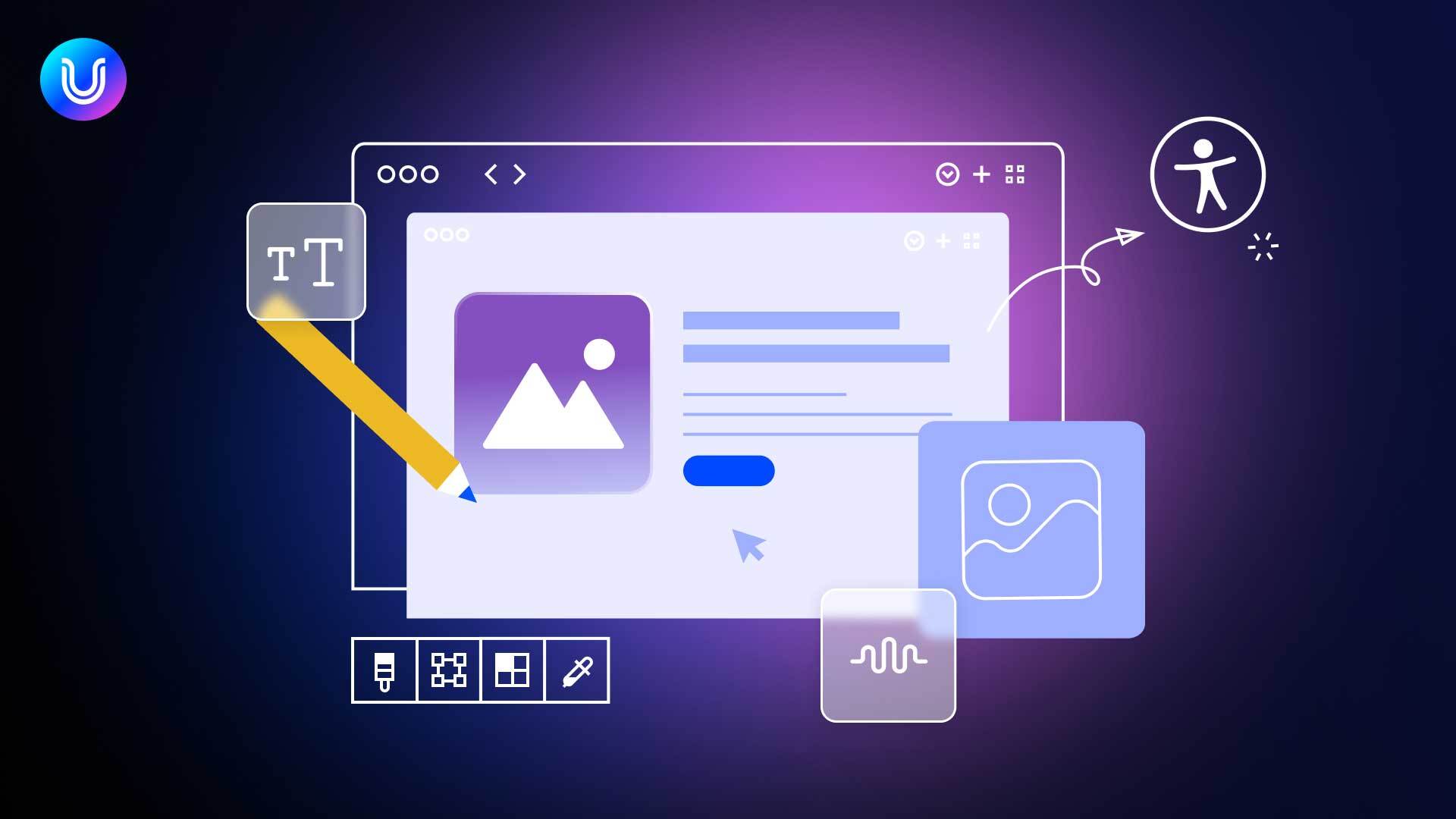Embracing Inclusive Web Design for Digital Accessibility

As people increasingly rely on the digital world to run their lives, the need for inclusive web design will only grow more critical. So, it’s essential to understand that inclusion by design isn’t merely a trend. It’s a commitment to creating online spaces that welcome everyone, regardless of their abilities, disabilities, or diverse needs.
This blog explores the fundamental principles, benefits, and challenges of inclusive web design and how it intersects with digital accessibility. You’ll also get proven tips to help your business achieve these objectives.
We start with the fundamentals.
Core Principles of Inclusion by Design
Designing for accessibility and inclusion ensures that websites and digital platforms are accessible to everyone, regardless of their physical or cognitive abilities. This approach goes beyond compliance and accessibility standards to embrace diversity and inclusivity from the initial design phase. Inclusive web design considers the needs of a wide range of users to create digital environments where everyone can easily navigate, interact, and engage.
The principles below are the foundation of inclusive web design for digital products like computers, smartphones and tablets:
-
Universal Design
Being inclusive by design aligns closely with the concept of universal design, which emphasizes products and environments everyone can use without adapting.
-
Flexibility and Customization
Design with flexibility and customization shows each user you care about their needs. Inclusive UI design examples include options to adjust text size, contrast, and other critical website elements.
-
Clear and Consistent Navigation
Straightforward headings, descriptive links, and consistent layouts help those who rely on screen readers or other assistive technologies to navigate and understand content.
-
Multimodal Interaction
Many end users interact with the web through touch, voice commands, or other means. Designing interfaces that support these multiple interactions broadens your accessibility and your audience.
Below, we look at how these principles benefit both website owners and end users.
Benefits of Inclusive Web Design
1. Expanded Audience Reach: Websites built with accessibility in mind are usable by a broader spectrum of users. This approach enhances the user experience for individuals with specific needs and taps into a larger market share.
2. Improved User Experience for All: A website with straightforward navigation, legible text, and intuitive interfaces leads to higher satisfaction and engagement.
3. Legal Compliance and Risk Mitigation: Many countries have legal frameworks that mandate digital accessibility. Inclusive web design ensures compliance with these regulations, helps prevent legal risk, and elevates your reputation and brand image.
4. Innovation and Creativity: Inclusivity encourages innovation. Designers are more apt to think creatively and consider a wide range of user needs when developing novel solutions that benefit all users. This innovative spirit can set a website apart in a crowded digital landscape.
Implementing inclusive web design also has inherent challenges, summarized in the following section.
Challenges of Designing for Accessibility and Inclusion
- Awareness and Education: Many designers and developers may need more awareness or understanding of inclusive design principles. Education and awareness campaigns are essential to bridge this knowledge gap and nurture a culture of inclusivity in the design community.
- Resource Constraints: Small businesses and organizations may need more budget, time, and expertise. Implementing inclusive design practices may require additional resources, which is often a significant hurdle for smaller firms.
- Technological Complexity: The rapid evolution of web technologies requires continual upkeep to ensure cross-platform and multi-device accessibility.
Ultimately, you want a top-down strategy for web design accessibility. But the tips below can get you started right away.
5 Tips for Creating Inclusive Web Design
1. Inclusive Images
Use high-quality, clear images and avoid stereotypical images with double meanings that can offend or confuse a broader web audience.
2. Content Structure
Break content into small, digestible sections with bold headers and subheaders so it’s easier for users to read and review. For peace of mind, follow WCAG standards to ensure accessibility.
3. Avoid Content-Based Photos and Graphics
The images and content on your site should have live text. Also, add alt text to describe various images and their importance.
4. Check Your Color Contrast
W3C suggests that the color contrast ratio between the background and text should be 4:5:1.
5. Keyboard Navigation
Ensure content is navigational with just a keyboard, for users can’t use a mouse due to visual and motor-related impairments.
Inclusive Web Design: The Ongoing Journey
Inclusive design is not a one-size-fits-all solution but a continuous journey of improvement and adaptation. We can create digital spaces that welcome everyone by embracing universal design, flexibility, straightforward navigation, and multimodal interaction. The benefits go beyond legal compliance, extending to expanded audience reach, improved user experience for all, and a culture of innovation.
However, addressing the challenges, such as awareness and education, resource constraints, and technological complexities, is crucial to realizing inclusive web design’s full potential. As we look ahead to the future of the internet, let’s continue to champion the cause of inclusivity in web design. Let’s contribute to an online world that reflects the rich diversity of its users.
UserWay: The Definition of Inclusive By Design
Since its inception, UserWay’s core principle has been web accessibility for all. Digital inclusion is seen in every facet of our products and services—from AI-powered tools to attorney-driven legal support and commission-based partnerships that enable accessibility across a wide range of industries.
Choose UserWay for your inclusive web design and compliance needs.
Answers to Common FAQs
What Are The Main Goals of Digital Inclusion?
Digital inclusion ensures everyone contributes to and benefits from the digital economy and society. The digital divide separates people who can access the internet from those who do not.
What Are Proven Ways to Ensure Digital Inclusion?
- Always focus on the users’ needs first.
- Embrace the technology of digital accessibility.
- Provide messaging, products, and services people care about.
- Don’t work in a vacuum—collaboration is crucial to success.
- Focus on the bigger accessibility picture to measure performance.
What’s the Most Prevalent Inclusion Obstacle?
Society’s old ways are often obstacles to progress, hindering digital inclusion. Accepting and adopting the right attitude and technology will ultimately propel accessibility forward.





Share